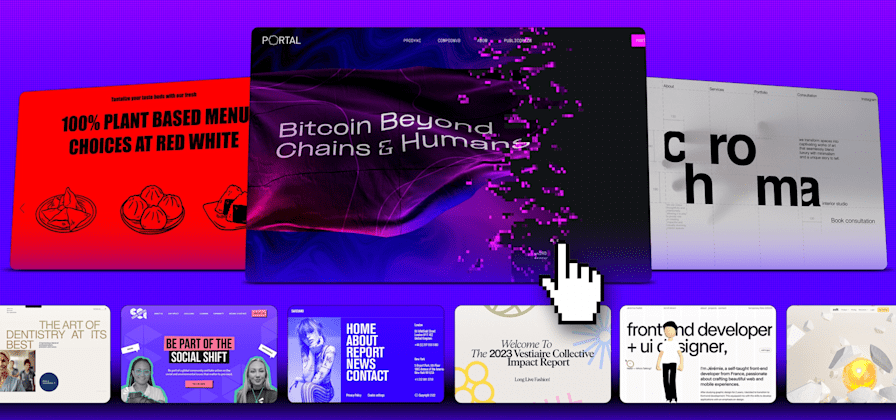Analyzing the Assimilation of Search Engine Optimization Techniques in Website Design for Improving Search Engine Presence and Position
In the electronic landscape where sites work as essential touchpoints for organizations, the combination of search engine optimization strategies in web design plays a crucial role in identifying their online success. As search engines continue to evolve and focus on customer experience and importance, recognizing how search engine optimization links with layout aspects becomes necessary for achieving high presence and ranking. By delving right into the complex relationship between design looks and search engine optimization strategies, we reveal a realm where creative thinking satisfies formulas to raise websites to the center of online search engine results.
Significance of Search Engine Optimization in Internet Design
The relevance of incorporating search engine optimization strategies right into website design can not be overstated in today's digital landscape. Look Engine Optimization (SEO) is crucial for boosting a site's presence, driving organic web traffic, and ultimately enhancing its search engine ranking. When SEO strategies are integrated right into the layout process, it makes sure that the website is structured in a manner that internet search engine can quickly creep and index its content.

In addition, SEO-friendly web design assists in building integrity and count on with both customers and search engines, causing long-term sustainable growth. Fundamentally, focusing on SEO in web layout is important for remaining affordable in the digital realm and attaining online success.
Secret Search Engine Optimization Components in Design
Incorporating SEO strategies into internet design not just boosts a web site's visibility and search engine ranking yet also pivots on key SEO aspects that are indispensable for optimizing its efficiency. Fast-loading web pages improve individual experience and lower bounce rates, aspects that look engines consider when ranking web sites. By concentrating on these essential Search engine optimization components in web style, internet sites can enhance their search engine exposure and position, inevitably driving more organic web traffic to the website.
Design Influence On Browse Ranking
Improving the layout of a site can significantly affect its online search engine position. Online search engine like Google take into consideration individual experience as an essential ranking variable. A well-designed internet site that is visually enticing, easy to browse, and mobile-friendly tends to place higher in search results page. Layout aspects such as web page layout, color pattern, font choice, and general aesthetic appeals contribute in appealing site visitors and encouraging them to stay much longer on the site, minimizing bounce prices and signaling to internet search engine that the web content is beneficial and relevant. Furthermore, a well-structured site layout with clear hierarchy and internal linking can aid internet search engine spiders index the site better, improving exposure in search engine result. Making certain fast packing times, enhancing photos, and using responsive design are likewise necessary layout factors that impact search ranking. By integrating SEO methods right into the website design procedure, organizations can boost their on-line presence and attract more natural website traffic.
Enhancing Individual Experience With SEO
Enhancing customer experience through calculated SEO execution is important for making the most of internet site performance and search engine exposure. With the raising use of mobile gadgets for net browsing, having more information a mobile-friendly site is not just user-friendly but likewise a ranking variable considered by search engines.

Furthermore, creating high-grade, appropriate content that satisfies user intent is necessary for both individual involvement and online search engine visibility. Material should be well-structured, simple to read, and enhanced for pertinent keyword phrases to boost search rankings and offer value to site visitors. Ultimately, by prioritizing user experience along with SEO methods, internet sites can accomplish greater visibility, enhanced website traffic, and better individual involvement.
Mobile-Friendly Design for SEO
Mobile optimization is a critical aspect of contemporary website design methods to improve search engine optimization efficiency. With the increasing number of customers accessing websites through mobile phones, internet search engine prioritize mobile-friendly sites in their rankings. To make sure optimum customer experience and improve search engine exposure, internet sites have to be responsive and adapt perfectly to different screen dimensions.
Mobile-friendly style not just accommodates customer choices however additionally straightens with internet search engine formulas that focus on mobile-optimized web content. web design. Google, for instance, has introduced mobile-first indexing, where the mobile variation of a website is the key resource for indexing and position. Failing to see post prioritize mobile optimization can result in lower search rankings and lowered presence, inevitably influencing web site traffic and interaction
Executing a mobile-friendly design involves factors such as receptive designs, quick loading rates, and instinctive navigation. By incorporating these elements right into website design, businesses can boost their search engine optimization performance, bring in even more organic website traffic, and provide a seamless surfing experience across all tools.

Conclusion
In final thought, integrating SEO strategies right into web design is crucial for improving search engine presence and position. By focusing on key Search engine optimization components in style, such as enhancing content and meta tags, internet sites can boost individual experience and increase their opportunities of rating greater in search results.
Search Engine Optimization (SEO) is crucial for boosting a web site's exposure, driving natural web design a web traffic, and ultimately improving its search engine position. When SEO strategies are incorporated into the layout process, it ensures that the web site is structured in a way that search engines can conveniently crawl and index its web content.
Integrating Search engine optimization methods into web design not only improves a website's exposure and search engine ranking yet also pivots on essential SEO aspects that are integral for maximizing its efficiency. By focusing on these crucial SEO aspects in internet design, web sites can enhance their search engine exposure and position, ultimately driving more natural traffic to the site.
In addition, a well-structured site style with clear power structure and internal linking can aid search engine crawlers index the website extra efficiently, enhancing presence in search results.